
-
Find the right food for your petTake this quiz to see which food may be the best for your furry friend.Find the right food for your petTake this quiz to see which food may be the best for your furry friend.Featured products
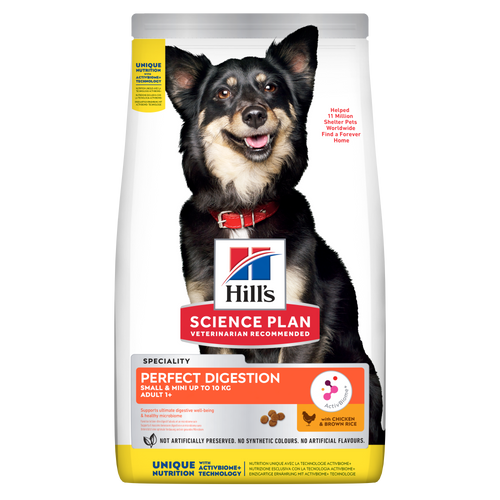 Perfect Digestion Small & Mini Adult Dog Food
Perfect Digestion Small & Mini Adult Dog FoodHill's Science Plan Perfect Digestion Small & Mini Breed Adult Dog Food with Chicken & Brown Rice supports ultimate digestive well-being & a healthy microbiome.
Shop Now Small & Mini Mature Adult 7+ Dog Food
Small & Mini Mature Adult 7+ Dog FoodHill's Science Plan Small & Mini Breed Mature Adult Dog Food with Chicken is a complete pet food, specially formulated with ActivBiome+ Multi-Benefit Technology.
Tailored nutrition to support graceful ageing in small dogs. Specially made with a synergistic blend of nutrients for energy & vigor.Shop Now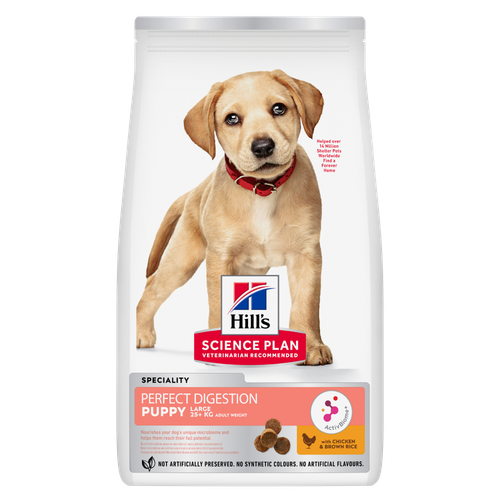 Perfect Digestion Large Breed Puppy Food
Perfect Digestion Large Breed Puppy FoodPrecisely balanced nutrition with Hill's ActivBiome+ prebiotic blend actively contributes to supporting digestive health and overall well-being to help your pet feel their best
Shop NowFeatured products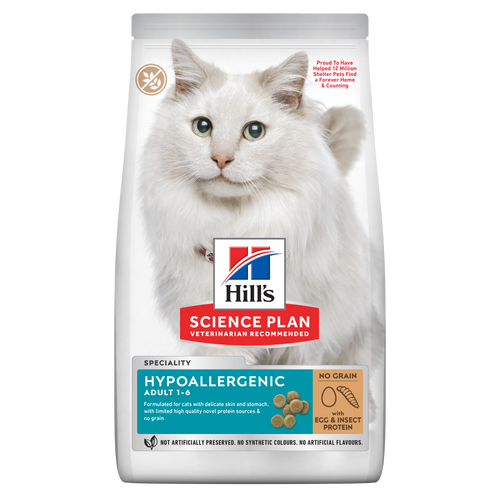 Hypoallergenic Dry Cat Food
Hypoallergenic Dry Cat FoodHILL'S SCIENCE PLAN Hypoallergenic Adult cat food with egg & insect protein is a complete pet food for adult cat 1–6 years old. It's formulated for cats with delicate skin and stomach, with limited high quality novel protein sources & no grain.
Shop Now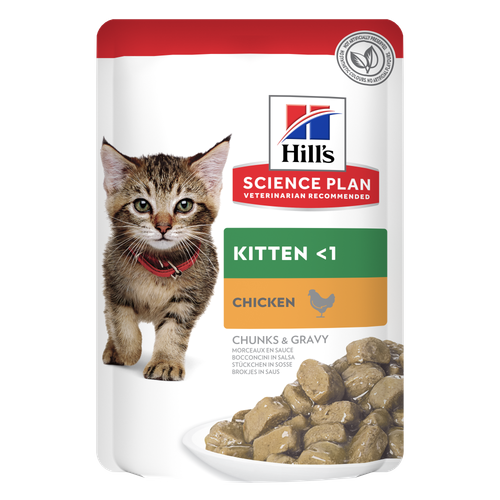 Kitten Food
Kitten FoodTender chicken chunks in gravy for kittens, with omega-3s for healthy eye & brain development and high-quality protein to support muscle growth. With balanced minerals to promote strong bones & teeth.
Shop Now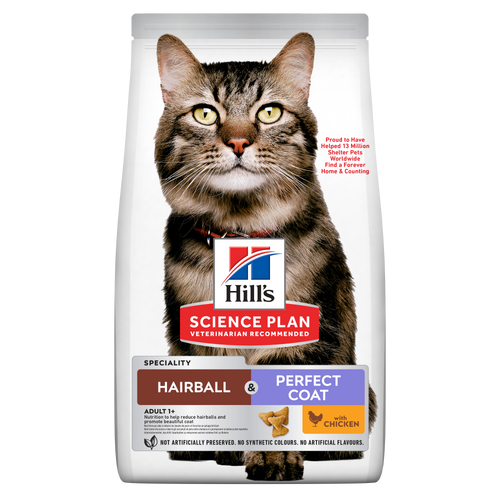 Hairball & Perfect Coat Adult Cat Food
Hairball & Perfect Coat Adult Cat FoodHill's Science Plan HAIRBALL & PERFECT COAT Adult cat food with Chicken is specially formulated to effectively help avoid hairball formation in adult cats while promoting a beautiful coat. Thanks to its mix of essential Omega-6 fatty acids, this food benefits the cat's skin and fur keeping them healthy and shiny. Our Advanced Fibre Technology helps reduce hairballs by naturally promoting their passage through the gut. This food is formulated with high-quality protein for a perfectly balanced, great-tasting recipe.
Shop Now -
Dog
- Dog Tips & Articles
-
Health Category
- Weight
- Food & Environmental Sensitivities
- Urinary
- Digestive
- Joint
- Kidney
-
Life Stage
- Puppy Nutrition
- Adult Nutrition
- Senior Nutrition
Cat- Cat Tips & Articles
-
Health Category
- Weight
- Skin & Food Sensitivities
- Urinary
- Digestive
- Kidney
-
Life Stage
- Kitten Nutrition
- Adult Nutrition
Featured articles Pet Food Storage Tips
Pet Food Storage TipsWhere you store your cat and dog food can make a big difference in the quality and freshness once it is opened. Here are some common questions and recommendations for optimal storage for all of Hill’s dry and canned cat and dog food.
Read More Understanding Your Pet's Microbiome
Understanding Your Pet's MicrobiomeLearn what a pet's microbiome is, how it contributes to your pet's gut & overall health, and why nutrition is important in maintaining healthy microbiomes.
Read More The Right Diet For Your Pet
The Right Diet For Your PetLearn what to look for in healthy pet food & nutrition, including ingredients, quality of the manufacturer, your pet's age, and any special needs they have
Read More -


Believe it or not, taking care of your dog's teeth is as important as looking after your own. It is critical for your pet's overall health to have proper dental care.
Plaque and Tartar
Saliva. Proteins, bacteria and food particles combine to form plaque that will gradually build up if left on the teeth. Minerals in his saliva will then turn it into tartar, a hard yellowish deposit that accumulates around the gum line. Tartar can irritate gums and lead to gingivitis, which is the beginning of periodontal disease.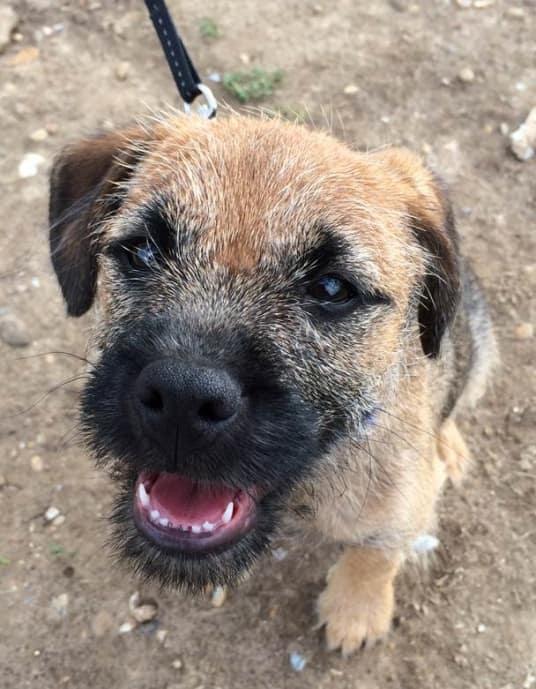
An age old problem
This can be a serious issue as dogs grow older. Bacteria and toxins attack the tooth, bone, gum and connective tissue around the tooth, which can lead to serious infection and the tooth falling out.
The bacteria that cause infection can also be distributed to the lungs, liver, kidney and heart if they get into the bloodstream.
So taking care of your dog's teeth will not only lead to a healthier pet, but also help you avoid expensive dental bills.
Tell-tale signs
Your vet will be able to spot any problems during your dog's annual check-up, but until then, here are some things to look out for:
- Yellow and brown tartar deposits on the gum line
- Difficulty eating
- Swollen and bleeding gums
- Bad breath
Remember, dogs can have bad breath for a variety of health reasons so don't' dismiss a foul smell as plain old doggy breath.


Tasty Tips
A good brush
So how to take care of your dog's teeth? Well, in much the same way as you take care of your own; regular brushing, a good diet and the occasional check-up. Brushing will be easier if you begin while they are still young, although a dog of any age will eventually get used to it.
Don't use toothpaste designed for people, dogs become distressed by the foam and it might upset their stomachs. There are pastes specially designed for pets that are safer and they will like the taste much better.
Depending on the size of your dog's teeth and mouth you may be able to use a regular toothbrush. There are however, specially designed brushes that fit on your finger to make brushing easier. Ask your vet what he or she would recommend.
Easy does it
To get your dog used to having his teeth brushed; start with plenty of reassurance to calm him down. Let him have a tiny taste of the toothpaste then gently massage hit teeth to get him used to the sensation.
He might not like it at first, but be patient, you'll get there in the end.
Brush in a circular motion, paying particular attention to where the tooth meets the gum. Then, when you're almost finished, brush vertically towards the inside of his mouth to clear any plaque you've dislodged.
You should brush your dog's teeth at least once a week but once a day is best.
Brushing alternatives
There are specially formulated dog foods and dog treats that can reduce tartar and avoid the onset of periodontal disease.
This is the simplest way of making sure your dog gets some form of 'brushing' each day.
Talk to your vet to see if they have a particular food or method they prefer. Remember though, that keeping your dog's teeth in good condition is essential for his overall health.


One of our staff authors prepared this article for you
Related products

Hill's Science Plan Small & Mini Breed Mature Adult Dog Food with Chicken is a complete pet food, specially formulated with ActivBiome+ Multi-Benefit Technology.
Tailored nutrition to support graceful ageing in small dogs. Specially made with a synergistic blend of nutrients for energy & vigor.
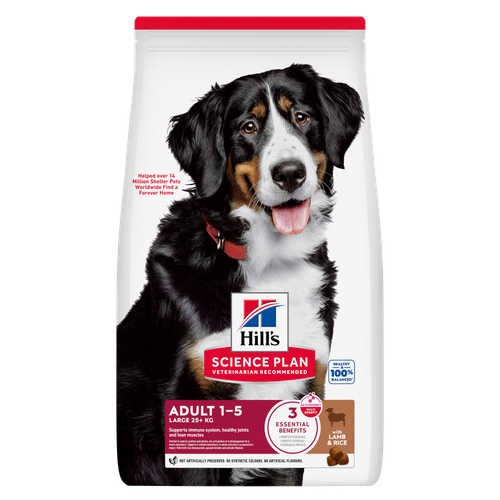
Hill's Science Plan Large Breed Adult Dog Food with Lamb & Rice is a complete pet food, specially formulated with ActivBiome+ Multi-Benefit Technology.
This food is specifically designed to fuel the energy needs of large breed dogs during the prime of their life.

Hill's Science Plan Perfect Digestion Small & Mini Breed Adult Dog Food with Chicken & Brown Rice supports ultimate digestive well-being & a healthy microbiome.

Precisely balanced nutrition with Hill's ActivBiome+ prebiotic blend actively contributes to supporting digestive health and overall well-being to help your pet feel their best
Related articles

Discover the causes, signs, and treatments of kidney disease in dogs and find methods of supporting your dog's kidney health. Learn more at Hill's Pet South Africa.

Learn about snake bites on dogs, including clinical symptoms to look for, what to do if you think your dog was bitten, and treatment & prevention options.

Dog obesity is a significant problem - learn more about helping your dog become trimmer and healthier through improved nutrition.

Discover how the field of dog science is giving us more and more insights into the inner workings of our furry best friends.

Put your dog on a diet without them knowing
Our low calorie formula helps you control your dog's weight. It's packed with high-quality protein for building lean muscles, and made with purposeful ingredients for a flavorful, nutritious meal. Clinically proven antioxidants, Vitamin C+E, help promote a healthy immune system.
Put your dog on a diet without them knowing
Our low calorie formula helps you control your dog's weight. It's packed with high-quality protein for building lean muscles, and made with purposeful ingredients for a flavorful, nutritious meal. Clinically proven antioxidants, Vitamin C+E, help promote a healthy immune system.

